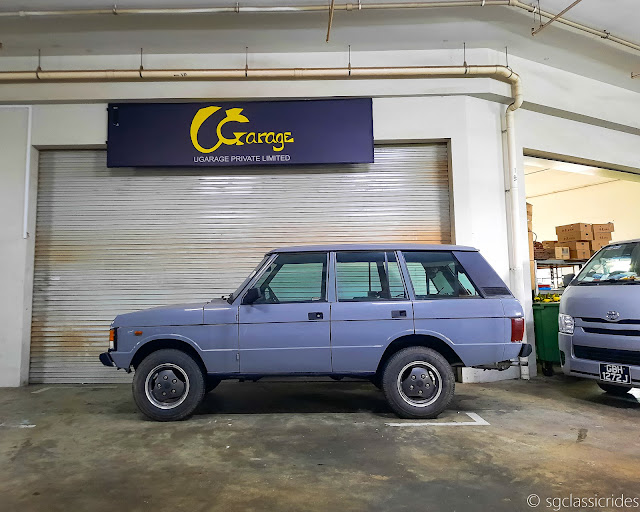Sometimes I just happen to stumble across older cars by accident (and that is the beauty of cars compared to other modes of transport like planes and trains). Coming across this 1985 Range Rover Classic was a bonus as I had been in the area for some errands, and I was quite wowed by its road presence...
The advent of the iconic Land Rover was hailed by many for its utilitarian hardiness when it was released in 1948. The Rover group then realised that a market existed for an off-road capable vehicle with more amenities and this culminated in the short-lived Tickford estate. Later in 1954, the 4-door version of the Land Rover was designed to accomodate more people, but apart from a few upgrades it remained spartan.
Recognising that more people wanted a comfortable 4x4 vehicle in the rough terrains of Africa and Australia, Rover began work on a 'Road Rover' that combined a Land Rover chassis with the comfort of a standard Rover car. The 1960s saw the rise of the sport utility vehicle (SUV) such as the Ford Bronco, which had both off-road capability and comfort for private users. Rover began work on the '100-inch station wagon' project to develop a proper competitor.
Introduced to the public in 1970, it received critical acclaim for being capable both on and off-road. The clean, square-cut design was appealing and the aluminum body panels was more resistant to corrosion. The panels were hung over a steel frame, allowing it to carry much structural strength. Furthermore, a 'symmetric dashboard' was also designed to cater to each side of the steering: the gauges could be simply installed on the correct side.
Up till 1981, the Range Rover was available only in a 2-door version for the sake of body strength; this was disliked by rich customers in the Middle East who usually had chauffeurs as it was hard to access the rear seats. 4-door conversions were offered in the 1970s by many companies: Switzerland-based Monteverdi was even approved by Land Rover to retain warranty. The 4-door version proved to be popular, leading to the phasing-out of the 2-door one in the UK market in 1984. There was a distinct change to the front end in 1986 with the introduction of pedestrian-friendly horizontal slats; later on, the fuel filler cap was hidden behind a flap and door hinges gradually evolved out of sight.

Many changes occurred in the Range Rover throughout its lifespan, both interior and exterior. For the 1985 model year, the dashboard design was revamped with a grab handrail fitted on the passenger side, seats could be reclined and 1-piece side windows were fitted on the 4-door models (the 2-piece side windows still remained for the 2-door). The top-of-the-range Vogue trim had electric windows, heated mirrors and a body tape across the car.
The 1985 4-door Range Rover was powered by a 3532 cc Rover V8 engine, allowing it to reach a top speed of 155 km/h with an acceleration of 15.1 seconds [0-100 km/h]. Its dimensions of 4475 x 1800 x 1785 mm, heft of 1900 kg and a rather thirsty fuel consumption of 14.8 litres / 100 km would have been out of the question for the frugal family man.
Production of the Range Rover ended in 1996 with more than 326,000 made, although its successor known as the LP/New Range Rover/P38 had been launched in 1994. It was also at this point that the 1st generation Range Rovers were rebranded as the 'Classic' to distinguish from its successor. Range Rovers had existed in small numbers back in the 1980s, and they were officially brought in by Regent Motors (currently our local Ford dealer) in 1987, although in Vogue trim. A 5-speed manual unit was S$205,587 while the 4-speed automatic would set you back by S$215,506. None of the original Range Rovers still remain, though a handful have been imported over the years.
More people are beginning to appreciate the classic Range Rovers, with its luxurious comforts (for its time at least) and superb off-road capabilities. 2-door versions are quite popular than the 4-door ones: this unit was only the 2nd one that I have seen currently. With more appearing on our roads, don't miss the chance to admire this off-road luxury when you have the chance!






